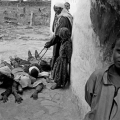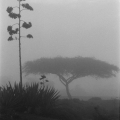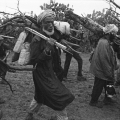Pélerins de Sheikh Hussein, ÉTHIOPIE
Les pélerins de Cheikh Hussein
Tous les ans plus de 15 000 musulmans, animistes Garibas (nomades) et Oromos, ermites et mystiques itinérants, convergent de toute la Corne de l’Afrique pour un rassemblement mystique peu connu autour d’un lieu sacré et ensorcelé : le mausolée de Cheikh Hussein. Dans les montagnes du Balé, au cœur de la région du Harar, le pèlerinage de Cheikh Hussein est comparé au Hadj (La Mecque). Au XVème siècle, Cheikh Hussein, un saint soufi fuyant l’intolérance religieuse aurait bâti une mosquée à l’emplacement du village. Il serait le premier « missionnaire » musulman à s’enfoncer au cœur de l’Éthiopie. Plus qu’un pèlerinage, c’est une vraie institution qui fait revivre des rythmes anciens oubliés et qui tend les bras aux contrées les plus éloignées de la Corne.
The Pilgrims of Sheik Hussein
Every year, over 15,000 Muslims, Garibas and Oromos animists, itinerant hermits and mystics, descend from the Horn of Africa for a little-known mystical gathering at a sacred and bewitched site, the Mausoleum of Sheik Hussein. In the mountains of Bale in the heart of the Harar region, the pilgrimage of Sheik Hussein is often compared to the Hadj (Mecca). In the 15th century Sheik Hussein, a Sufi saint fleeing religious intolerance, built a mosque in a local village. He was the first Muslim « missionary » to venture deep into the heart of Ethiopia. This annual pilgrimage is a veritable institution that brings ancient and forgotten rhythms back to life and welcomes the faithful from the most far-flung regions of the Horn.


















































